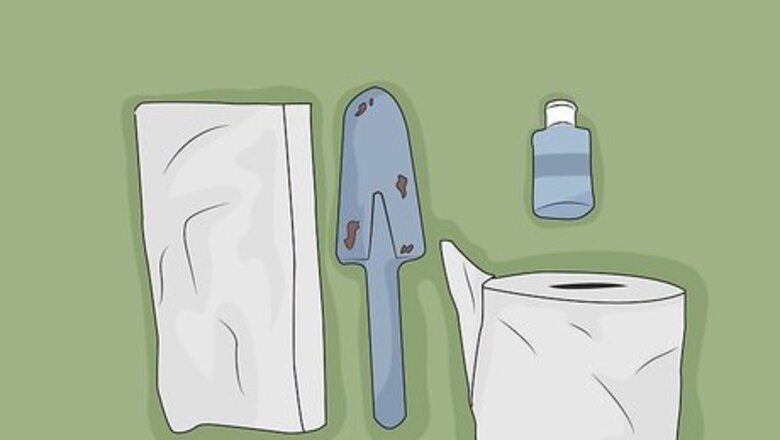
views
Packing Out Feces

Get waste kits if you'll be traveling in cold, dry areas with little soil. Poop breaks down fast in rich soil, especially if the area is warm and sunny. If you plan on exploring a cold environment that doesn't have a lot of soil, it would be hard to dig a hole for feces, so buy human waste kits before you go. These kits contain a large bag, toilet paper, and antibacterial wipes. Buy waste kits from outdoor supply stores or online. You can usually buy a single kit for less than $5 or buy a bulk package. If you're hiking or camping in a park, they may give you waste kits when you buy a permit for the park. You should also pack out poop if you are within 200 feet (61 m) of water.
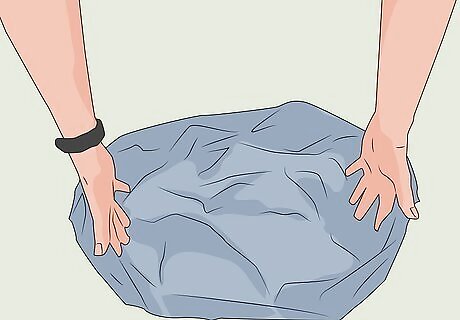
Spread out a waste bag and poop directly into the bag. Unfold the large waste bag from the kit and set the toilet paper and antibacterial wipe to the side. Arrange the bag so it's spread out as wide as possible. Then, squat over the bag and poop into it. If you need to urinate as well, don't pee in the waste bag. Instead, try to urinate somewhere wet or on rocks, pine needles, or gravel. Then, poop into the bag. If you find it difficult to poop into the bag, you can poop into a hole and then transfer the poop into the bag once you're done.

Wipe with toilet paper and use an antibacterial wipe to clean your hands. Use the toilet paper that came with the kit to wipe and drop the toilet paper into the bag with the poop. Then, open the antibacterial wipe and rub it thoroughly over your hands to kill germs. Put the used wipe into the bag, too. The waste bag contains a gelling material that breaks down the feces.
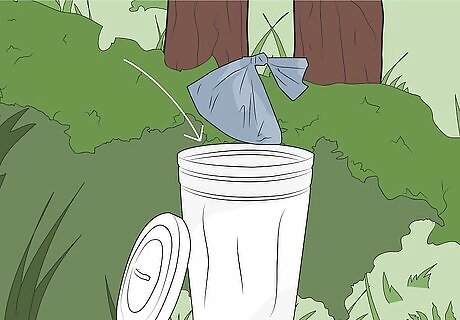
Seal the bag shut and throw it away in a trash can as soon as possible. Squeeze the excess air out of the bag so it's easier to pack. Depending on the type of bag you have, twist the bag closed or pull drawstrings to draw it shut. Then, seal the top edge of the bag. Carry the bag with you until you come to a trash can and toss it in. You can use the same bag more than once if there's space in the bag for more feces. Keep in mind that you will need more toilet paper and antibacterial wipes or hand gel. Never leave your waste kit on the side of a trail or at a campsite. You may be fined if you improperly dispose of feces in a campground or park. If you have to carry the waste bag in your backpack, you might want to place it in a bigger plastic bag to prevent leakage until you can throw it away.
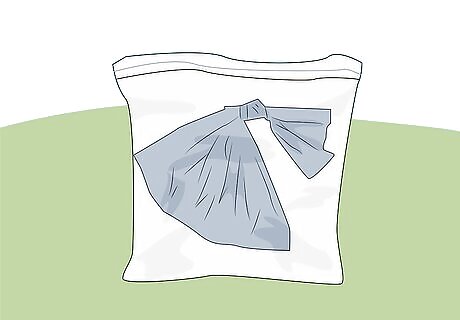
Pack the feces in a sealable plastic bag if you don't have a waste kit. Waste kits make packing out poop a lot easier, but you can use household items to make your own kit. Bring toilet paper, a large sealable plastic bag, and a disposable food storage container. To use your homemade kit, poop directly into the bag and wipe with any type of toilet paper. Squeeze out the air and seal it shut before you put it into the disposable container.
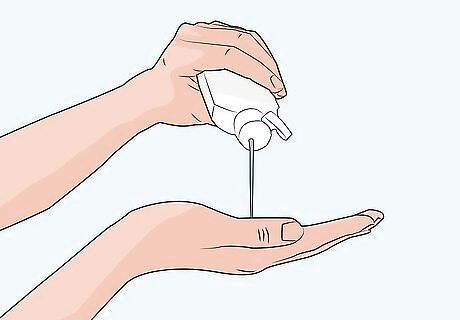
Wash or sanitize your hands after handling the waste bag. Any time you handle the waste kit or plastic bag containing poop, wash your hands afterwards with soap and water as soon as possible. If you don’t have access to soap and water, use hand sanitizer or sanitizing wipes to clean your hands. Wash for at least 20 seconds, and make sure to wash all surfaces of your hands, including your wrists, the backs of your hands, and under your fingernails. Washing your hands will help get rid of dangerous germs that could cause disease. If your hands are obviously dirty, try to rinse them or wipe them with a damp cloth or wet wipe before using hand sanitizer. Hand sanitizer is less effective at killing germs on greasy or dirty skin.
Using a Cat Hole

Find a spot that's away from water if you want to bury the feces. The germs from feces can easily contaminate the water supply if you toilet near a river, pond, or lake, for instance. Choose an area for the hole that's far from water to protect your water supply. 200 feet (61 m) is about 70 adult-sized paces. Don't bury the waste kit since it won't break down easily. Instead, only use a cat hole if you plan on pooping directly into the hole and burying it.

Look for a secluded spot away from trails or campsites. You don't want someone accidentally coming across you while you're toileting, so find an area that's not near people. This might mean that you need to hike into a forested area to find a good spot. Consider making your cat hole near fallen timber, on an isolated hillside, or in an area with thick undergrowth. Make more than 1 cat hole if you're camping with a group or camping for more than 1 night.
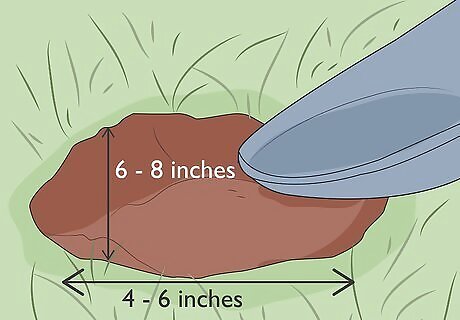
Dig a 6 to 8 in (15 to 20 cm) hole that's 4 to 6 inches (10 to 15 cm) wide. Bring a small shovel or garden trowel with you and dig a hole that's deep enough to hold the poop and hide the odor. Make it 6 to 8 inches (15 to 20 cm) deep and 4 to 6 inches (10 to 15 cm) wide. Pile the dirt from the hole on the ground next to it. You'll use the dirt to fill in the hole once you're done. If you're in the desert, don't make the hole as deep since it will take longer to break down. Dig your hole just 4 to 6 inches (10 to 15 cm) deep so the sun and heat speed up the process.

Poop directly into the hole and wipe yourself with toilet paper. Squat over the hole so you're leaning forward slightly and poop into the cat hole. Once you're done, wipe with unscented, biodegradable toilet paper for camping and drop it into the hole. If you don't want to use toilet paper, wipe with soft leaves. Just check that you're not using poison oak leaves!
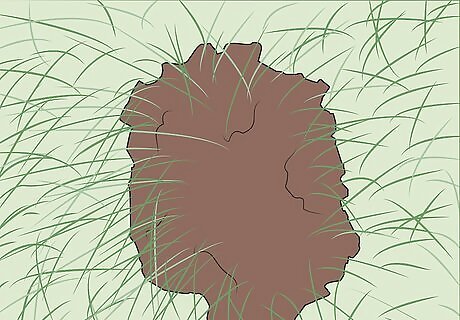
Cover the poop and toilet paper with dirt. Use your shovel to put the soil back into the hole to cover the poop and toilet paper. Keep filling the hole until it's level with the surface of the ground. Then, step on the spot to pack down the soil. Filling in the hole traps the odor, which prevents animals from digging up the feces.

Disguise the surface with leaves, branches, and natural materials. Take a few seconds to scatter branches, leaves, and sticks over the area so it doesn't stand out. You can put a rock or an upright branch on the spot to prevent other people from accidentally digging into the hole.
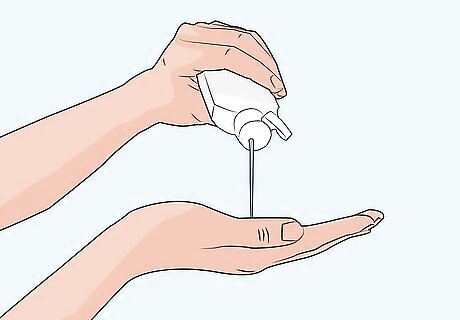
Wash your hands or rub them with hand sanitizer. If you have access to water, pour some over your hands and rub biodegradable soap between them to make a lather. Then, rinse your hands. If you don't have water and soap, squirt hand sanitizer onto your palm and rub your hands together. Ensure that you rub between your fingers and under your nails.
Getting Rid of Stool on a Daily Basis
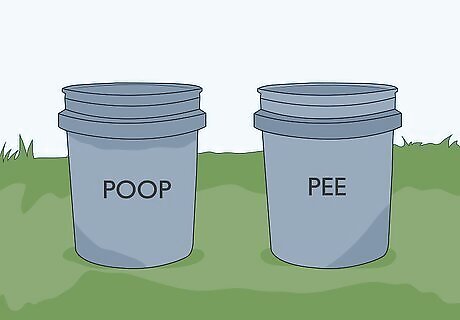
Label 2 buckets and line 1 bucket with a trash bag. Place a couple of 5 US gal (19 L) buckets in a private area that you can use as a bathroom. Mark 1 of the buckets "poop" and the other bucket "pee." Then, line the poop bucket with a heavy-duty trash bag. It's important to separate the waste so your buckets don't fill up too quickly. You'll also need a tight-fitting lid for each bucket to contain the smell.
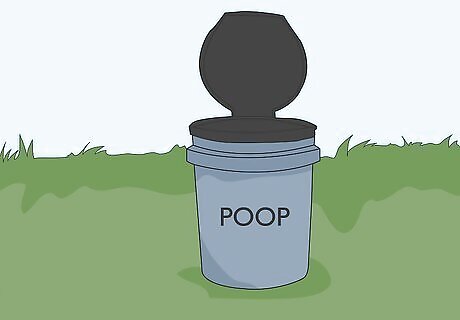
Set a plastic seat on the open bucket to make it more comfortable. Although you can squat over the bucket when you need to poop, putting a plastic seat on the top of the bucket makes it easier. You can move the seat to the other bucket if you just need to pee. Keep the seat near the buckets when they're sealed.
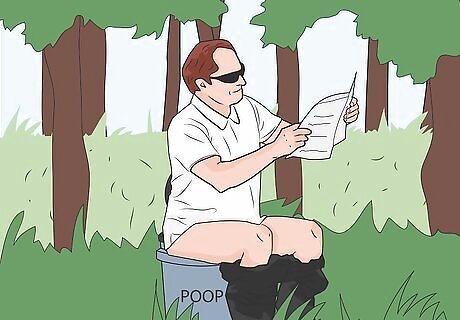
Poop into a bucket and put used toilet paper into it. When you need to poop, set the seat on the bucket labeled "poop" and do your business. Then, wipe with regular toilet paper and drop it into the bucket. Don't worry if you accidentally pee into the bucket. It's fine if a little urine gets into the bucket, but it will add to the smell.
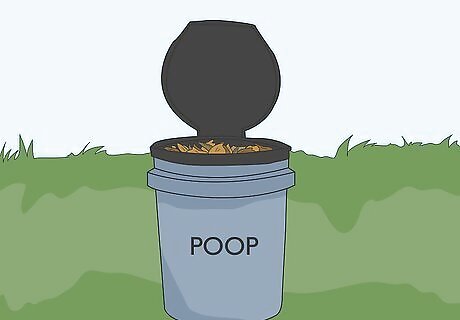
Cover the poop with carbon material and put the lid on the bucket. Once you've finished, scoop carbon material onto the poop so it's completely covered. You could use sawdust, finely shredded paper or newspaper, wood chips, dried leaves, or coffee husk chaff. Then, set the lid onto the bucket, but don't seal it completely shut or the poop won't be able to dry out properly. Set the container of carbon material near your buckets so they're easy to access.
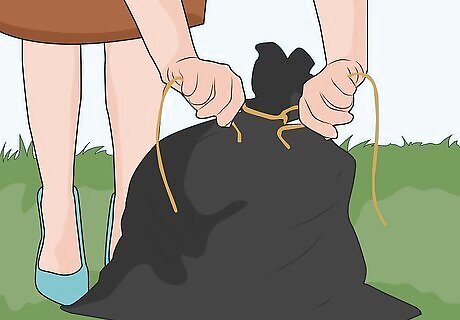
Seal the bag once it's half full and store it in a safe spot. Don't fill the bucket until it's full or the bag will be too heavy to carry. Twist the bag shut once it's half-full and place it into another bag. Double-bagging can cut down on the smell. Then, put the bag somewhere that's away from children, pets, or rats. Wait for news from your local authorities about how to properly dispose of the bags. Your city might ask you to bring waste bags to a designated drop spot or they may pick up the bags, for instance.

Wash your hands any time you handle the buckets. Every time you go to the bathroom or handle the buckets, wash your hands thoroughly afterwards. If possible, use soap and clean, running water. If you don’t have running water, use a hand sanitizer that’s at least 60% alcohol. You can also use sanitizing hand wipes to clean your hands.


















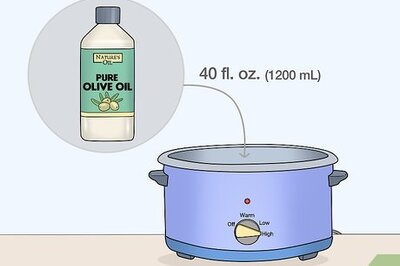

Comments
0 comment